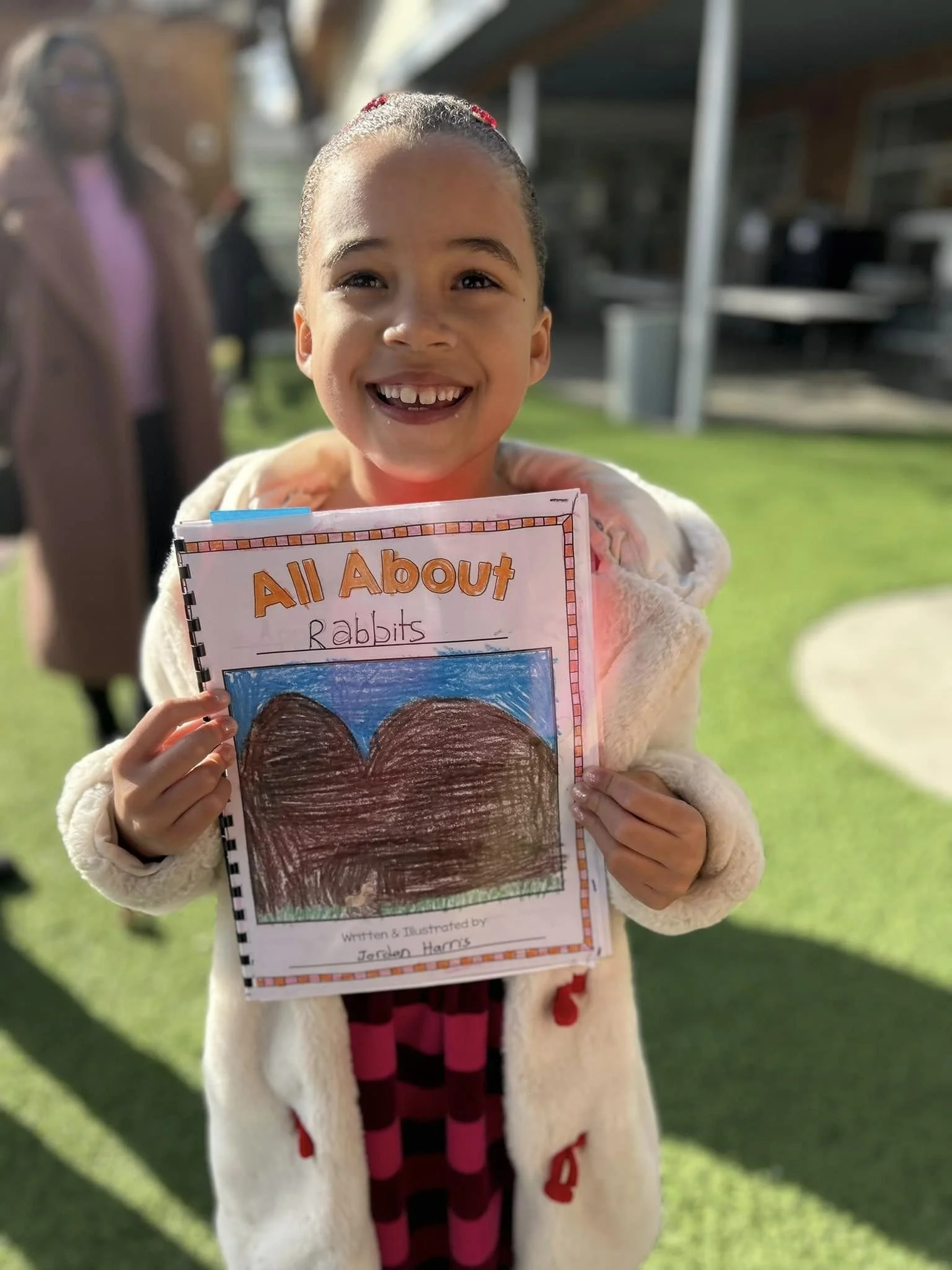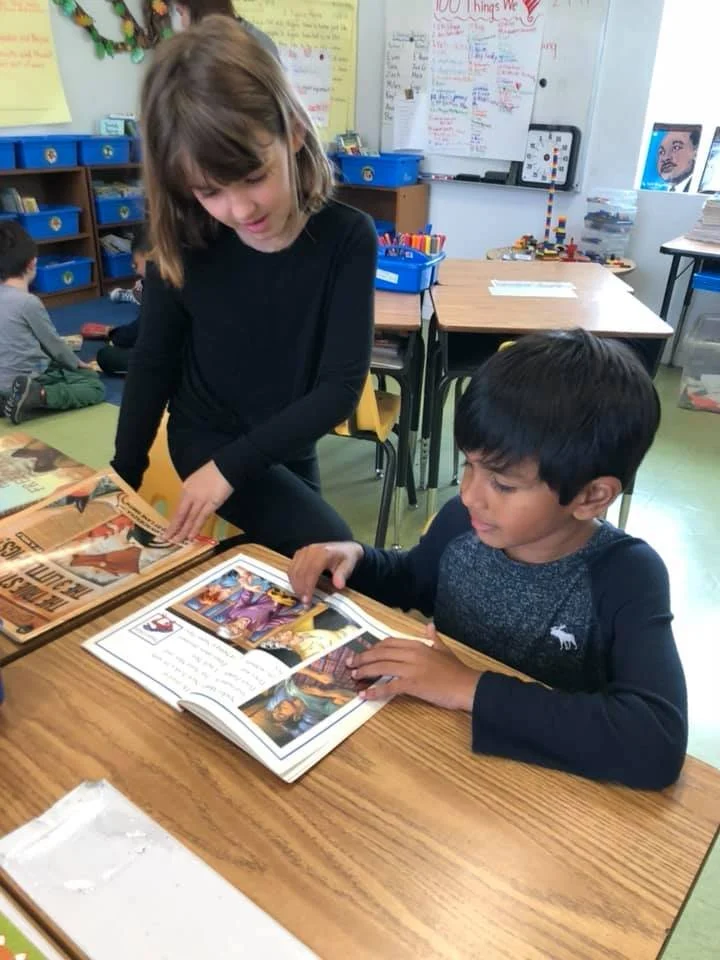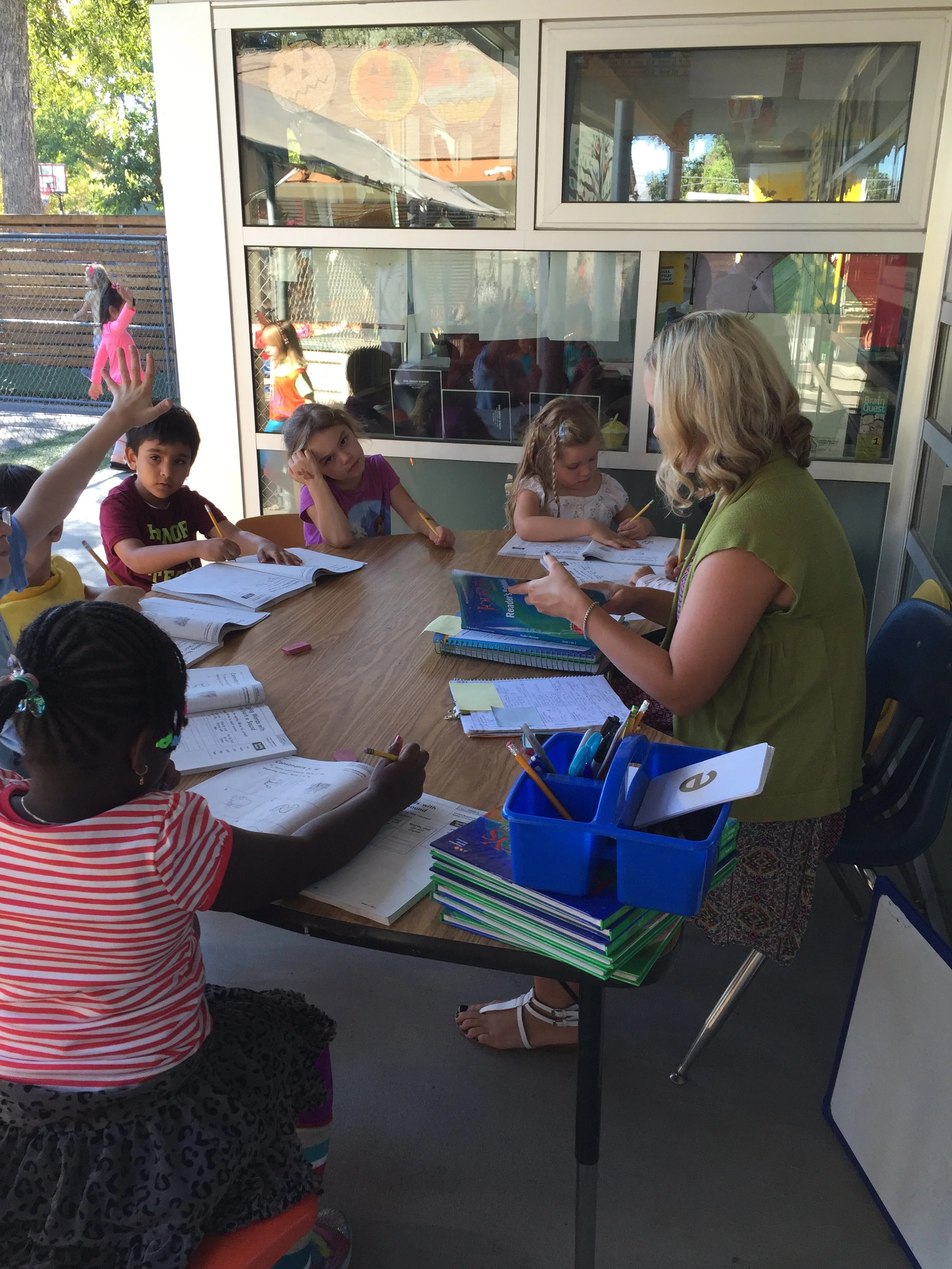Learning Progressions: Building Skills That Grow With Your Child
At WHPS, children aren’t just learning subjects — they’re building skills that grow over time. Families tell us they value how clearly we break skills down—whether academic or SEL—so children know what’s expected now and what comes next.
These progressions aren’t only about “getting to the next workbook page.” As a progressive school, we focus on teaching for transfer: helping students apply what they learn in real life, now and in the future.
True Language Arts Is More Than Literacy
Reading, writing, word study, and public speaking aren’t just academic subjects. They’re how children learn to think deeply, communicate clearly, and discover who they are. AI can already write a book report, summarize an article, and outline a five-paragraph essay.
What AI can’t do is think for a child.
Or speak from their lived experience.
Or connect with an audience in a real and human way.
That’s why we focus on the skills that matter most:
Voice Purpose Perspective Presence
At WHPS, our goal is to help students build strong minds—and the confidence and clarity to share them with the world.
✍️ Writing With Purpose—and Voice
At WHPS, students don’t just respond to prompts. They write with voice, clarity, and conviction—learning how to organize thoughts, connect with readers, and express who they are.
-
At WHPS, students write every single day using a Writing Workshop model that mirrors how real writers work. Instruction is individualized, meaningful, and designed to grow both skill and confidence.
Every unit follows a clear four-phase structure:
✏️ 1. On-Demand Writing
At the start of each unit, students respond to a short prompt in a new genre (e.g., narrative, informational, persuasive). They write independently in a single sitting, using only what they already know—no pre-teaching, no supports.Teachers carefully analyze these samples to identify:
Whole-class focus areas
Strategy groups for small group lessons
Individual writing goals
This is what allows our teaching to be so targeted and personalized.
🎯 2. Mini-Lessons & Goal-Setting
Teachers deliver short, strategy-based lessons—often modeled from mentor texts—and then confer with students one-on-one or in small groups.Each child receives a custom learning path through the unit, based on their specific writing goals. This might include strategies like adding dialogue, improving transitions, or strengthening elaboration.
📣 3. Publishing & Celebration
Students revise and prepare a final piece for sharing. Some are typed and bound into class anthologies; others are presented to peers or families. These publishing moments aren’t about perfection—they’re about celebrating voice, growth, and pride in the process.📝 4. Off-Demand Writing
At the end of each unit, students complete another brief, independent writing sample in the same genre. This time, they apply everything they’ve learned.Teachers use Off-Demands to:
Measure individual growth
See which strategies stuck
Identify skills to revisit later on
Together, these bookend writing samples ensure that every child is making meaningful progress and getting exactly what they need next.
-
At WHPS, writing instruction is deeply personalized. Teachers don’t just teach to a grade level—they analyze each child’s writing to identify individual goals based on readiness, not age. From there, they set targeted objectives that help each student grow as a writer. You can view a sample of our Writing Skill Progression below, which outlines what learning looks like across three major genres: narrative, informational, and opinion writing. These progressions reflect the typical learning range from TK through 8th grade, though our instructional model extends through skills commonly introduced in high school.
By focusing on what each student is ready to learn next, our teachers ensure that every child is both challenged and supported—whether they’re mastering basic conventions or crafting writing with voice, structure, and clarity.
📖 Reading That Builds Thinkers
At WHPS, students don’t just learn to read—they learn to think. Whether decoding a new word or analyzing a big idea, reading here is a personalized journey that adapts to each child’s pace, level, and strengths.
-
From TK through 2nd grade, students build decoding and fluency through a multisensory phonics progression, paired with real books—not just leveled readers. In small groups, teachers adjust instruction to each child’s stage of development.
Starting in 2nd grade, students are matched to their instructional reading level and grouped flexibly for:
Strategy groups to build comprehension
Book clubs exploring theme, perspective, and character
Fluency coaching using expressive reading
Vocabulary and genre studies tied directly to writing
Reading and writing are deeply connected. Students read to become better writers—and vice versa.
-
Reading instruction is:
Flexible enough to support a wide range of learners
Designed to stretch well beyond grade level—when students are ready
Rooted in joy, meaning, and connection to real ideas
Every child is on their own path—and the ceiling is high.
🎤 Public Speaking
Not every child will grow up to give a TED Talk—but every child deserves to learn how to speak clearly, confidently, and from the heart. At WHPS, public speaking is part of the learning journey from TK through 5th grade.
-
In Lower Elementary (TK–1st grade), students begin by sharing ideas during class discussions, narrating from illustrations, and responding to open-ended prompts. They learn how to:
Project their voice
Organize their thoughts
Use tone, posture, and expression to engage listeners
By Upper Elementary (2nd–5th grade), students are giving structured presentations that explain, persuade, or reflect—often accompanied by visual aids and written drafts. Every 5th grader in our school also writes and delivers a graduation speech—a moving moment where each child’s unique voice takes center stage. If you haven’t been to a WHPS graduation yet, you’re in for a real treat.
What truly sets WHPS apart is the daily practice students receive.
At Morning Meeting, children aren’t just sitting in a circle—they’re actively developing speaking and listening skills. Most days include guided prompts that introduce specific:
Sentence structures
Speaking techniques
Active listening cues
Eye contact and body language strategies
A student who attends WHPS from TK through 5th grade has nearly 1,000 authentic opportunities to practice public speaking—with coaching, modeling, and meaningful feedback along the way.
Public speaking isn’t an event. It’s part of how we build connection and community—every single day.
-
Not every child will give a TED Talk. But every child will need to:
Speak clearly in interviews
Advocate for themselves
Collaborate with peers
Disagree respectfully
In a world of constant distraction, our students learn to make eye contact, listen closely, and speak from the heart.
Public speaking isn’t just a skill—it’s a foundation for leadership.
🔤 Word Study & Spelling
Spelling at WHPS isn’t about memorizing word lists. It’s about understanding how words work—how they sound, how they’re built, and what they mean.
-
At WHPS, spelling and word study aren’t treated as isolated workbook pages or weekly quizzes. They’re an integral part of our literacy program—personalized, developmental, and embedded in meaningful instruction.
In Preschool and TK, children begin with Handwriting Without Tears, building strong foundations in grip and letter formation in age-appropriate ways. Even before formal spelling instruction begins, teachers assess each child’s writing development and offer just-right support to move them forward.
From TK through 2nd grade, students receive small-group phonics instruction guided by a research-based scope and sequence. This instruction is hands-on, multisensory, and rooted in Orton-Gillingham strategies—proven effective for all learners, including those with signs of dyslexia.
We also use Jump Rope Readers, a decodable book series that mirrors our phonics progression. These books offer real stories, inclusive characters, and engaging plots—because early reading should matter to children and reflect the world they live in.
Instead of labeling students as “high” or “low,” we use flexible, like-learner groupings. Teachers regularly adjust instruction in real time to meet students where they are. The goal isn’t to rush ahead—it’s to move steadily forward on a path that fits each child’s developmental journey.
By 2nd or 3rd grade, most students transition into Words Their Way, a developmental spelling and vocabulary program that continues through high school. Placement is guided by diagnostic inventories that do more than check for correct spelling. These tools analyze sound patterns, syllable types, and spelling conventions to pinpoint where a child’s understanding is strong and where more support is needed.
Words Their Way is designed to:
• Stretch high-achieving students beyond grade level
• Deepen vocabulary and pattern recognition
• Support a wide range of spelling and word usage skills -
We call it Word Study because it’s more than just spelling.
It’s how children begin to:
Notice patterns
Understand structure
Build vocabulary
Use words purposefully in reading and writing
Because Word Study is fully integrated into literacy instruction—not treated as a stand-alone subject—students don’t just memorize. They internalize. And they grow stronger in both reading and writing because of it.
Quick Overview of the Word Study Progression:
Preschool–TK: Handwriting Without Tears
TK–2nd: UFLI phonics sequence + Jump Rope Readers
(As students assess out of phonics, they move into Words Their Way. In the classroom, both are simply called Word Study.)2nd–5th: Words Their Way spelling and vocabulary continuum
Each phase builds on the last—creating consistency, deep understanding, and a strong foundation for confident, purposeful literacy.
🌱 Social-Emotional Learning (SEL) Progressions
Just like reading or writing, social-emotional skills grow step by step. At WHPS, SEL is woven into every day—from morning meetings to friendship circles to collaborative projects.
Our progressions, grounded in child development and executive function research, give children clear benchmarks in self-regulation, cooperation, and independence. Families often share how much they value this clarity—knowing what’s expected now and what comes next.





